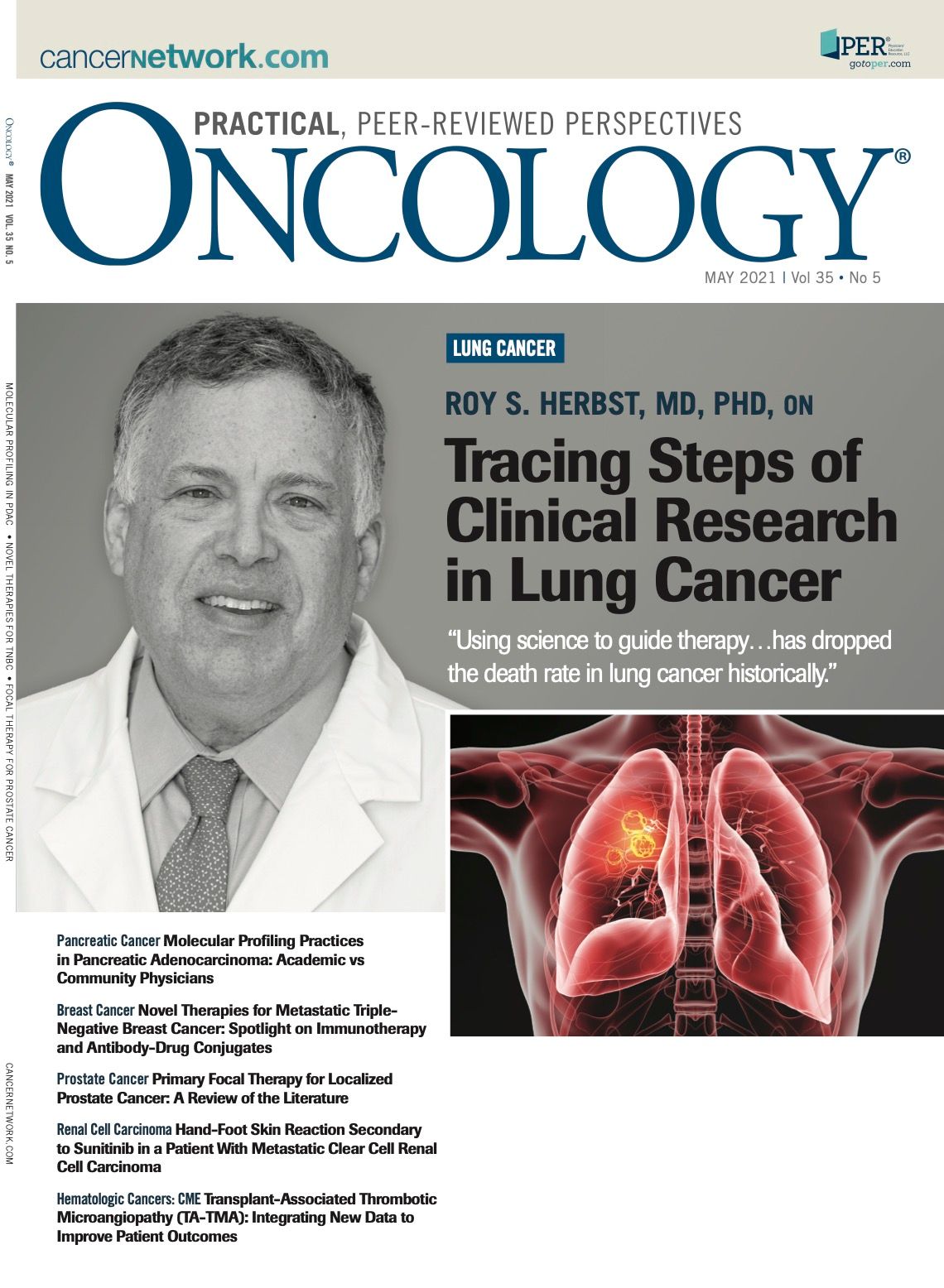Next-Generation Sequencing for Advanced Pancreatic Cancer: A Technology Whose Time Has NOT Come
In his "Letter to the Readers", co-editor-in-chief of the journal ONCOLOGY Howard S. Hochster, MD, reviews the utility of next-generation sequencing in pancreatic ductal adenocarcinoma.
Hochster is Distinguished Professor of Medicine at Rutgers Robert Wood Johnson Medical School and Associate Director for Clinical Research at Rutgers Cancer Institute of New Jersey as well as Director of Oncology Research at RWJBarnabas Health.

In this edition of ONCOLOGY®, Christine Y. Chung, DO, and colleagues report on the next-generation sequence (NGS) testing status of 77 patients referred to their practice for phase 1 study enrollment. It seems in the case of both community and academic practices, in their Colorado area referral zone, about half the patients had previously received either tumor or circulating tumor (ct)DNA testing for actionable mutations. Although the authors point out the rate of sequencing is approximately equal in the 2 settings, my question is why physicians are even doing this expensive testing.
Through The Cancer Genome Atlas1 determination of molecular profile for 150 pancreatic cancers, we know that 93% of patients will have KRAS mutations and another 10% other, usually concurrent RAS mutations. TP53 mutations occur 72% of the time, and only 4% to 5% have a BRCA mutation. Other actionable mutations are really quite rare. For example, 3% will have BRAF mutations. Also, in the SWOG 1513 study (NCT02890355),2 E. Gabriela Chiorean, MD, and her colleagues showed, in a second-line chemotherapy setting, that perhaps 30% had some kind of DNA repair defective gene based on a defined “HDR” assay, yet the addition of a PARP inhibitor to FOLFIRI (folinic acid, 5-FU, oxaliplatin, and irinotecan) was not beneficial.
In the “Know Your Tumor” (KYT) study3 referenced by Chung, the patients who had sequencing-informed treatment seemed to do better. But let’s look further at these data. Nearly 1900 patients were enrolled and 1082 were sequenced. Only 667 had outcome data and 38% of these were considered “actionable,” yet many of these are mutations with no known molecular drugs effective for pancreatic cancer, including ATM, AKT2, PALB2, and CDK mutations. The outcome data are heavily influenced by the very few with microsatellite instability–high tumors, diagnosable with immunohistochemistry—no NGS required—and NTRK fusions. The outcome of this so-called actionable group was indeed superior, yet what does it represent? This is a noncontrolled trial that perhaps tells us that patients with DNA repair deficits do better overall, perhaps due to sensitivity to our current chemotherapy drugs. It does tell us very little beyond the few actionable mutations we already know about.
Finally, we know that patients with germline mutations may be candidates for olaparib (Lynparza) following induction chemotherapy. However, the guidelines recommend that all patients receive germline testing. This is less expensive than tumor NGS or even ctDNA testing, and may be done even by generally available platforms such as 23andMe. If we perform tumor NGS to find BRCA mutations and then later perform germline testing, this will lead to increased costs to the health care system. Additionally, the approval for use of this PARP inhibitor in pancreatic cancer does not include patients with somatic BRCA mutations.
A new class of RAS inhibitor drugs, specifically targeting KRAS G12C is now in the clinic. These drugs are showing activity in non–small cell lung cancer and potentially will be active in colon cancer. Once these drugs and others targeting more common KRAS mutations have been shown effective for pancreatic cancer, there will be a good reason to perform NGS testing on all patients with pancreatic cancer. At the moment, NGS testing is an expensive test that would cost the health care system over $200 million annually, if all 60,000 cases of newly diagnosed pancreatic cancer were tested. Personally, I am looking forward to when this will be a cost-effective technology.
REFERENCES
1. Cancer Genome Atlas Research Network. Integrated genomic characterization of pancreatic ductal adenocarcinoma. Cancer Cell. 2017;32(2):185-203.e13. doi: 10.1016/j.ccell.2017.07.007
2. Chiorean EG, Guthrie KA, Philip PA, et al. Randomized phase II study of second-line modified FOLFIRI with PARP inhibitor ABT-888 (Veliparib) (NSC-737664) versus FOLFIRI in metastatic pancreatic cancer (mPC): SWOG S1513. J Clin Oncol. 2019;37(suppl 15):4014. doi:10.1200/JCO.2019.37.15_suppl.4014
3. Pishvaian M, Blais E, Brody J, et al. Overall survival in patients with pancreatic cancer receiving matched therapies following molecular profiling: a retrospective analysis of the Know Your Tumor registry trial. Lancet Oncol. 2020;21(4):508-518. doi: 10.1016/S1470-2045(20)30074-7

How Supportive Care Methods Can Improve Oncology Outcomes
Experts discussed supportive care and why it should be integrated into standard oncology care.